
Do you love animals? If so, you’ll want to learn about the Red Lechwe Antelope. This is one of the most beautiful and unique animals in Africa.
In this blog post, we will discuss everything you need to know about the Lechwe Antelope, from its physical characteristics to its behavior in the wild.
We’ll also take a closer look at its conservation status and what people are doing to protect this amazing animal.
What is Red Lechwe Antelope?
Red Lechwe Antelope is a species of antelope that lives in Africa. This animal has many different names, including the common name “Red Lechwe” and the scientific name Kobus leche.
The Red Lechwe or Waterbuck (Kobus leche) is an African water-loving antelope found only in parts of South Africa.
The species is known for its bright red coloration and longhorns, which are used in fights between males competing for territory or mates.
What is Red Lechwe Antelope Size?
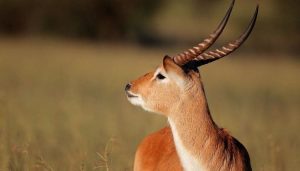
Male Red Lechwe Antelope weigh between 220 and 330 pounds, while females weigh between 110 and 220 pounds.
The body length of a red lechwe antelope is approximately 49 to 63 inches, with the males being larger than the females. The shoulder height is typically around 30 inches.
What is Red Lechwe Antelope Habitat?
The Red Lechwe antelope lives in wetland areas of Africa where there is plenty of vegetation for them to eat.
These animals prefer grassy plains but can also be found in marshes, swamps, and other wetlands.
What is Red Lechwe Antelope Lifespan?
The Red Lechwe antelope can live up to 20 years in the wild.
What is Red Lechwe Antelope Diet?
The Red Lechwe antelope are herbivores, which means they eat plants. They feed on grasses and other plants that grow near water sources such as rivers or lakes.
Where Does The Red Lechwe Antelope Live?
The Red Lechwe Antelope lives in Africa. They are found in the wetlands of Zambia, Zimbabwe, Botswana, and Angola.
What is The Physical Description Of the Red Lechwe Antelope?
The Red Lechwe Antelope has a red body with white underparts and legs. They have long, curved horns that are used for fighting.
Their eyes are dark brown and their ears are large and pointed.
Their horns are long and spiral, which is what makes them so unique from other antelopes. They have brown eyes that make them look cute when they look up at you!
Red Lechwe Antelope Reproduction -Breeding Season
The red lechwe antelope’s breeding season takes place from January to March. The male will seek out a female and protect her until she is ready to mate.
After the female is pregnant, she will migrate to a calving ground. This gives her calf protection from predators because the calves are born in large groups.
The Lechwe Antelope’s Female Calves Stay With Their Mothers for About Two Years and Males Eventually Live Together in All-male Groups.
Red lechwe antelopes will live in herds that can number up to 100 individuals. They are also found, however, in smaller groups of about eight animals or even as single animals.
What Are Red Lechwe Antelope Predators?
They are eaten by lions, cheetahs, and hyenas – they can run fast but not fast enough to escape these predators!
Red Lechwe Antelope Communication And Perception
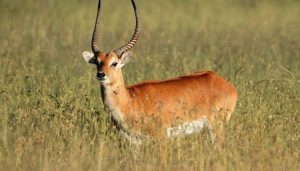
They communicate with each other by visual and vocal signals, as well as pheromones which are released through their skin glands when they feel threatened or excited.
Their ears can detect high-frequency sounds like those made by small rodents up to 100 meters away, but the human voice is too low for them to hear anything at all!
What is Red Lechwe Antelope Behavior?
The red lechwe antelope lives in groups called herds.
They are most active at dawn and dusk when it is cooler outside, which helps them conserve energy during these hot times of the day.
What is Red Lechwe Antelope Conservation Status?
The Red Lechwe antelope is considered to be a vulnerable species by the International Union for Conservation of Nature (IUCN).
Red Lechwe Antelope Population and Threats
The Red Lechwe antelope population is declining due to habitat loss from human development.
They are also hunted by poachers who sell their horns and other parts on the black market.
What are Red Lechwe Antelope Interesting Facts?
The Red Lechwe antelope’s name comes from a German word meaning “red deer“. These animals live in Africa, Asia Minor, and Europe but not North America.
What is Red Lechwe Antelope Role İn The Ecosystem?
The red lechwe is an important part of the ecosystem, as they help to keep the wetlands healthy. They eat aquatic plants and help to spread the seeds of these plants.
They also help to keep the wetlands clean by eating algae and other plant material. The red lechwe is prey for many predators, including lions, hyenas, and crocodiles.
As a result, they play an important role in maintaining the balance of the ecosystem.
How Many Red Lechwe Antelope Are Left İn The World?
The exact number of red lechwe antelope left in the world is unknown. However, there are about 25,000 to 50,000 remaining in the wild.
The population has declined by an estimated 40% over the past 20 years due to habitat loss and hunting. There are currently no recognized subspecies of red lechwe antelope.
Red Lechwe Antelope Hunts
Red lechwe antelope hunts present a unique hunting opportunity for those interested in taking part in the sport. The antelope are shy and elusive, making them an exciting target to hunt.
How Do I Hunt One of These Animals?
Hunting red lechwe antelopes is an exciting and rewarding experience for any hunter. The first step is to obtain a valid hunting permit from the appropriate governmental agency in the country where the hunt will take place. It is important to familiarize yourself with local hunting regulations and laws before beginning your hunt. The next step is to scout and identify a habitat that is likely to have a healthy population of red lechwe antelopes. Scouting the area can be done on foot or with the aid of binoculars or a spotting scope. Once you have identified a suitable habitat, you can use baits, calls, or decoys to attract the antelope into position for a shot. As with any hunt, it is important to practice ethical hunting practices and ensure that you take only what you need. Hunting red lechwe antelopes is an exhilarating experience that can be enjoyed by anyone prepared to take the necessary steps.
Why Should I Hunt Them?
The red lechwe antelope is an iconic animal native to the wetlands of central and southern Africa, and it is a popular species for hunters to pursue. Hunting red lechwe antelopes are beneficial to the overall conservation of their population because it provides incentives for local communities to protect their habitat. In addition, hunting them is a great way to experience the African wilderness in its natural state. Furthermore, the red lechwe antelope is an incredibly challenging species to hunt due to its speed and agility, making it a highly sought-after trophy by hunters.
- A Rare Visayan Spotted Deer Population In The Philippines
- The Lelwel Hartebeest Antelope: An Amazing Animal
- Endangered Species: Tora Hartebeest Antelope
- The Western Hartebeest Antelope (alcelaphus Buselaphus Major)
- African Hartebeest Antelope: Unique Facts About an Interesting Animal
What are People Doing to Protect the Red Lechwe Antelope?
The Red Lechwe antelope is protected by law in many countries where it lives, but there are still poachers who hunt them for their horns or other parts of the body which can be sold on the black market.
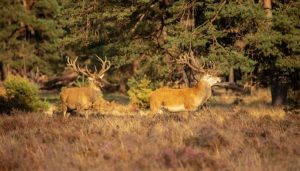
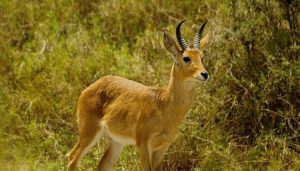

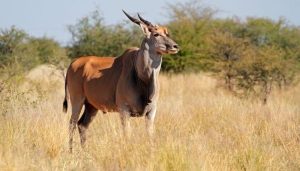
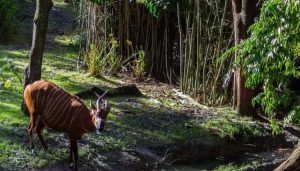

Leave a Reply